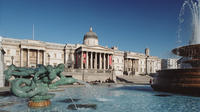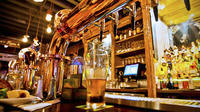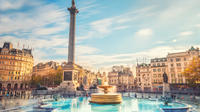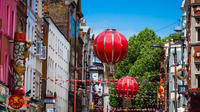Trafalgar Square ★☆☆
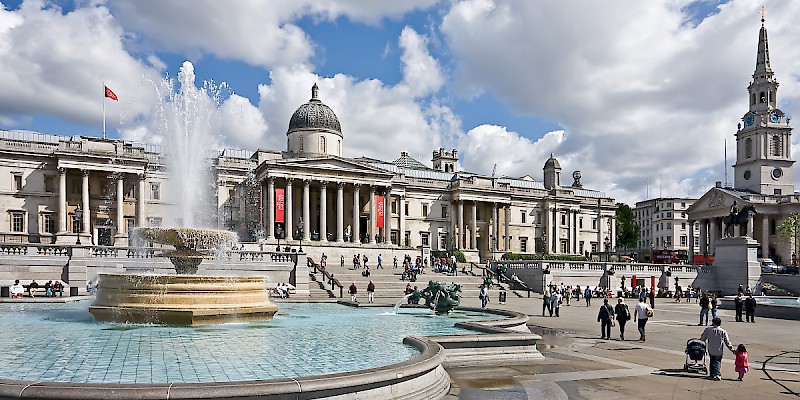
London's main central square is flanked by top sights and pinned by Nelson's Column
Trafalgar Square is central London's public living room, sited right where the West End meets Westminster, a favorite gathering place, protest plaza, tourist turnstile, and the site of the London's semi-official city Christmas Tree during Yuletide.
(A note to past visitors who remember feeding the famous flocks of feral pigeons on Trafalgar. Feeding this mass of some 35,000 birds was outlawed in the early 2000s, and much of the flock was eradicated. Now only the usual amount of urban pigeons struts around.)
Tafalgar Square is flanked on the north by the grand neoclassical facade of the National Gallery, to the NE by the spire of St-Martin-in-the-Fields church, and around much of the rest by various grand Embassies and High Commissions (notably Canada House on the west—designed in the 1820s by Sir Robert Smirke, architect of the British Museum—and South Africa House on the east—designed in the 1930s by Sir Herbert Baker).
Neslon's Column and other Trafalgar statues
Between two large quadrefoil 1845 fountains frolicking with mermaids, tritons, and dolphins, the exclamation point rising from Trafalgar Square's center is the 52m (169-foot) Nelson's Column, erected in 1843 by William Railton to honor Admiral Lord Horatio Nelson, hero of the 1805 Battle of Trafalgar.
The four bronze plaques around the base—cast from melted-down captured French cannon commemorate the Battle of the Nile, Battle of Copenhagen, Battle of Cape St. Vincent, and the Death of Nelson at Trafalgar.
The giant bronze Barbary lions guarding the column (and usually crawling with visitors) were added by Sir Edwin Landseer in 1867.
Also on the square are four plinths toped by statues: to the NE is King George IV, to the SW is General Sir Charles James Napier, and to the SE is Major General Sir Henry Havelock. The so-called Fourth Plinth to the NW stood vacant for decades, but is now host to a rotating series of contemporary sculptures.
The south end of the square is a traffic circle around the 1633 equestrian statue of Charles I, by Hubert Le Sueur.
The Admiralty Arch
Just off Trafalgar Square's SW corner rises the Admiralty Arch, designed by Aston Webb (who also did the facade of Buckingham Palace) at the behest of King Edward VII to commemorate his mother, Queen Victoria.
This arch is quite literally the gateway to Westminster, straddling the end of The Mall (rhymes with "pal," not "hall"), London's premier parade route, passing the north end of government row before making a beeline for Buckingham Palace. The asphalt of The Mall is stained crimson to serve as an eternal red carpet leading to the palace.
Tips
Given its surrounding sights, you are likely to cross Trafalgar Square anyway, but it is also a nice place just to hang around, sit by a lion or fountain, and give your feet and brain a break from the sightseeing. I'd budget at least 15–20 minutes.







